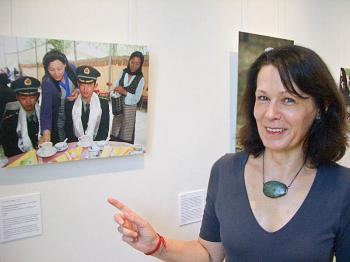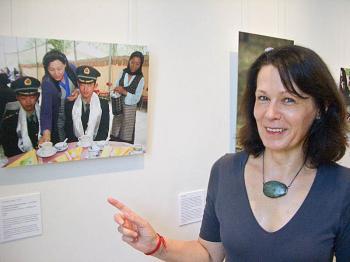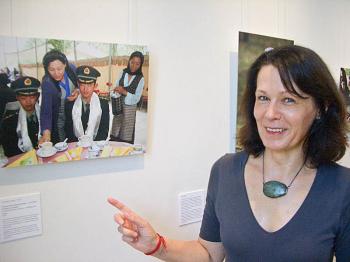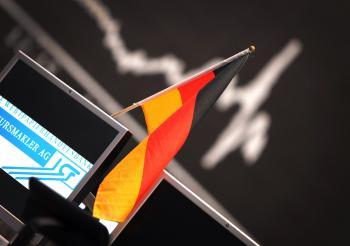Thirty-two of the 700 photos the artists submitted were chosen for the exhibit, substantial enough to get a vividly diverse picture of everyday life in Lhasa, as well as reveal unexpectedly rare facets that help to ground our perception of Tibetan life. Who would have expected to discover a photo capturing a Tibetan Muslim festival? Or an ancient mosque, a small boy in Tibetan festival finery and typical headdress, or Muslim women clad in the chador? The curator discreetly mentions that even provincial governors had attended this event.
The photos were displayed at the World Culture Museum, Frankfurt am Main, Germany.
Islam Alongside Buddhism in Lhasa
One contributor to the exhibit is Suo Mani, a Muslim artist, who is a painter, and now a photographer, as well. He studied at the art school in Lhasa, the town where he also lives. He is a member of a large Muslim group, that migrated from Kashmir centuries ago and that ended up settling in Tibet. The descendants from the original group continue to live peacefully alongside their primarily Tibetan Buddhist neighbors
A series of three images from another artist chronicle the deterioration of the famous Drepung Buddhist Monastery, which was once formerly a highly respected university. The monastery of antiquity, also a revered destination for pilgrims, has since been reduced to a mere open-air museum. Red arrows mark the way for tourists.
Up until 1959, the monastery was home to 10,000 monks—now it houses at most, several hundred. Significant losses were incurred during the Chinese Cultural Revolution (1966-1976). Not even Deng Xiaoping’s liberalization and a period of relative calm could restore the monastery’s former glory. Since then, tensions between Tibetans and communist officials have only continued to mount.
Modern Means Exist Beside Traditional Ways
Are tradition and modern technology antithetical in present day Tibet? Several exhibition photos attest to the contrary! We seldom perceive the multi-layered strata that make up modern Tibetan society for what it truly is; some even view emerging reports of violent repression as fiction.
One photo image from daily life shows a man and a woman sitting at a table. She has a thermos bottle in front of her, while he has a traditional bowl of buttered tea. She reads from Buddhist texts, while the man holds a cell phone to his ear. (Ruler Songtden from the Greater Tibetan Kingdom had developed the standardized Tibetan scriptures in the 7th century.)
Cell phones are the current rage in Tibet, with every Tibetan owning at least one, including nomads, according to exhibit curator, Elke Hessel. She is an academic advisor/aide at the Tibethaus Deutschland e.V. (as registered in Germany.) She has close, long-time ties with the artists, and had encouraged them to submit their photos.






